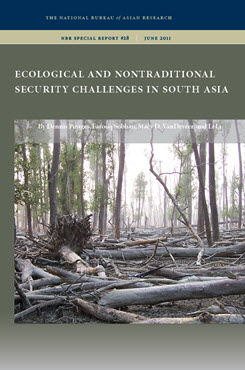Environmental Security and Disaster Management in South Asia
Initial Thoughts on Implications for the United States
This essay examines the implications for the United States of South Asia’s current and future nontraditional security (NTS) concerns related to environmental security and disaster management.
EXECUTIVE SUMMARY
This essay examines the implications for the United States of South Asia’s current and future nontraditional security (NTS) concerns related to environmental security and disaster management.
MAIN FINDINGS
- NTS challenges are most likely to become priority issues for U.S. policymakers when they are perceived to threaten regional stability or the U.S. power position in South Asia.
- It is unlikely that NTS issues in the region will become a U.S. priority, unless they multiply or enhance existing threats or social cleavages.
- U.S. policies and social practices have externalized (that is, globalized) much of the costs of U.S. fossil fuel use and material consumption onto the developing world, where climate change will have a substantial impact without local populations receiving many of the short- and long-term benefits associated with economic growth in OECD countries.
- All evidence suggests that by 2025 South Asia will play host to a larger human population with greater economic inequality that will struggle to survive and prosper amid changing global, regional, and local climates and weather patterns.
POLICY IMPLICATIONS
- As the ramifications of climate change accumulate and accelerate, policymakers in affected states will have greater incentive to link their needs to U.S. policy priorities in order to gain leverage with the U.S.
- If the effects of climate change are blamed on the U.S., domestic political actors in the region are likely to exploit popular anger. This has the potential to make international cooperation with U.S. policymakers more difficult or to increase hostility toward U.S. interests in the region more broadly.
- Long-standing disaster threats will likely either persist or worsen, even as growing populations and economies seek greater public-sector capacity to manage environmental security and disaster risks.
- Regional institutions can enhance, but not replace, state and private-sector capacity. Therefore, U.S. engagement in regional institution-building should focus on enhancing the capacities of both the public and private sectors to meet challenges such as infectious diseases, migration, and climatic disasters.


